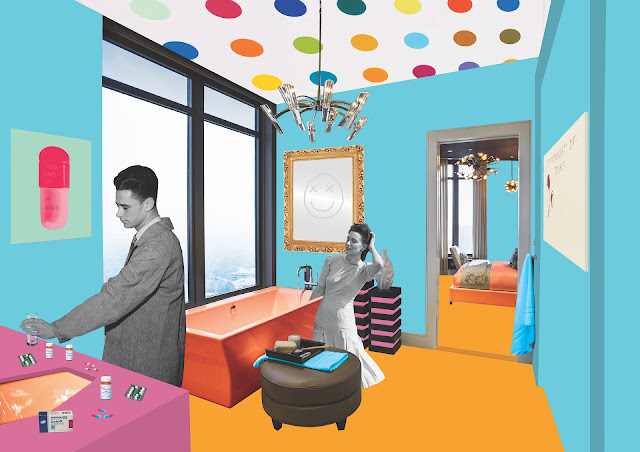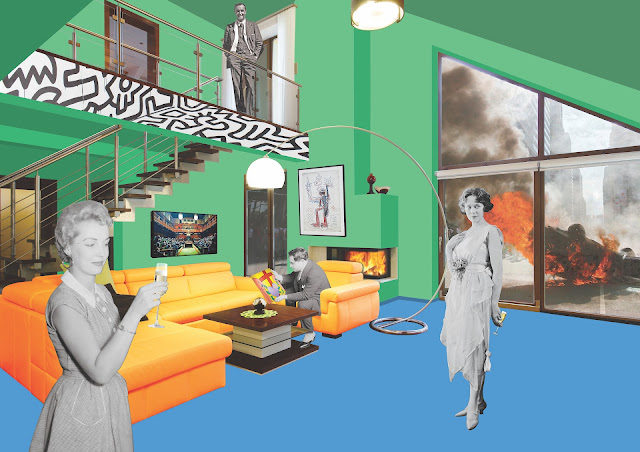Interview with artist Charlie Haydn Taylor
A vibrant undertaking of some of society’s most pressing issues, the work of Charlie Haydn Taylor uses the intimacy of home interiors to discuss personal human dilemmas and broader issues ranging from government surveillance to the effect of mental health on individual behaviour.
A modernisation of the classic British pop art of the 1960s, Charlie utilises key themes from well-known artworks to relate to the central idea of each piece; from Damien Hirst’s spot paintings as a reference to pharmaceutical use, to Francis Bacon’s feature as a comment on the depicted figures struggles with their human condition. “I’m happy that my work seems to be transcending time and space. I really just want to create time stamps, so that people notice the world we’re living in.” – Charlie Haydn Taylor
Read on to learn more…
 |
Artist: Charlie Haydn Taylor |
Reflected in your artwork are some of society’s most pressing issues. Why did you choose to work on these?
I think a lot of it comes down to various issues that affect, or are beginning to affect, people from my generation - meaning that I am involved both directly or indirectly by them. For instance, we are now living in a time where mental health has become more prevalent in its affliction, whilst our methods of helping those with these issues have also become prevalent. It feels natural to talk about such a current subject while contrasting it against how we used to perceive such problems.
 |
“You Can Only Be So Happy, But You Could
Be Dead”
by Charlie Haydn Taylor, digital collage on aluminium, 2020 |
What is so interesting about personal human dilemmas and the mental health aspects? What do you hope to achieve or convey with your art?
I believe that people – individuals - are what make up society, not groups. I’m just interested in exploring the issues affecting people. That could be misogyny, climate change, mental health. And then I like to look at how those same issues might have appeared in the past; how we all, as individuals, respond in our unique ways to such matters, which is, in itself, fascinating.
What memorable responses have you had to your work?
A surprising response I received recently was from a collector who had been through personal struggles with drug and alcohol use. He mentioned that my work resonated with him and felt as though he could relate to it on a deep level, as though he could almost replace the depicted figure in the work with his former self. You never know how people will respond, which is what I love about art. Someone else may have been through similar issues yet may not like my work as it reminds them negatively of those times, which is also understandable.
 |
“Narcissus” by
Charlie Haydn Taylor, digital collage on aluminium, 2021 |
What role does the artist have in society?
I don’t think the artist has to play any particular role in society. That’s the beauty of it. Some artists work extremely personally, with their art almost an extension of their subconscious, such as Tracey Emin. There are also artists like me who use art to hold a mirror up to society. Both are engaging, just in two completely different ways. I’ve never felt pressured to create work that sets me up with a specific role in society as I believe we all, as individuals, have different ideas to express, and these ideas may change as our lives go on.
 |
“Fool’s Paradise” by Charlie Haydn Taylor, digital
collage on aluminium, 2020 |
What’s the best piece of advice you’ve been given?
Never create work that you think will sell. Never. It just never works, and you will quickly see that your art no longer resembles you as a person once you take a step back. Attempted commerciality is one way for artists to lose their voice altogether. Create work that interests you or feels as though you are true to yourself.


